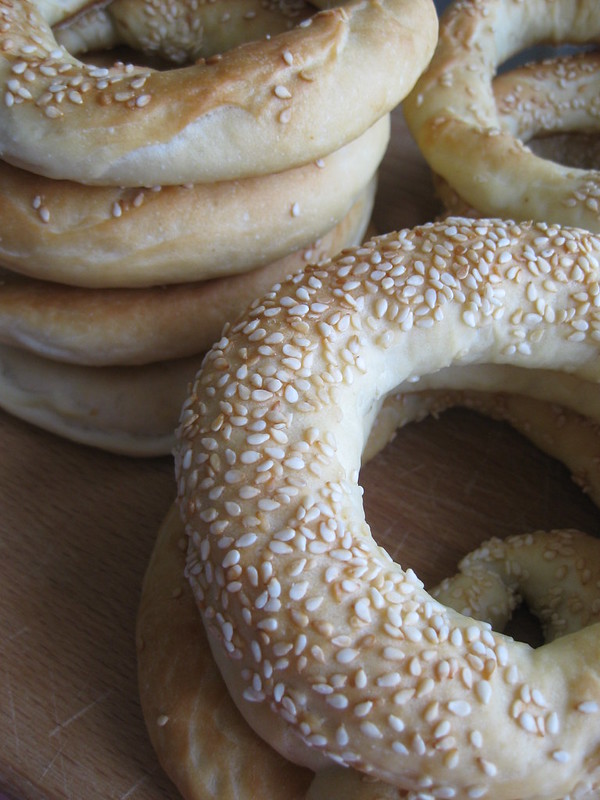
This is a take 2 of trying to reproduce the wonderful bread rings called koulouri: street food, breakfast food, snack food, these rings are sold all over the place in Thessaloniki, Greece. Of course I’ve done many more attempts over these years but the result has never been nearly as good.

And hooray, now there’s a video of this recipe that you can watch (there was a request for that in one of the comments to the take 1)! I’m sure there’ll be no problem with it being in Greek as you might as well just try to reproduce the movements of the baker with the help of the recipe that follows. Here’s the video from the SKAI’s Chef on Air TV program – start watching from 3:55 if you don’t know Greek.
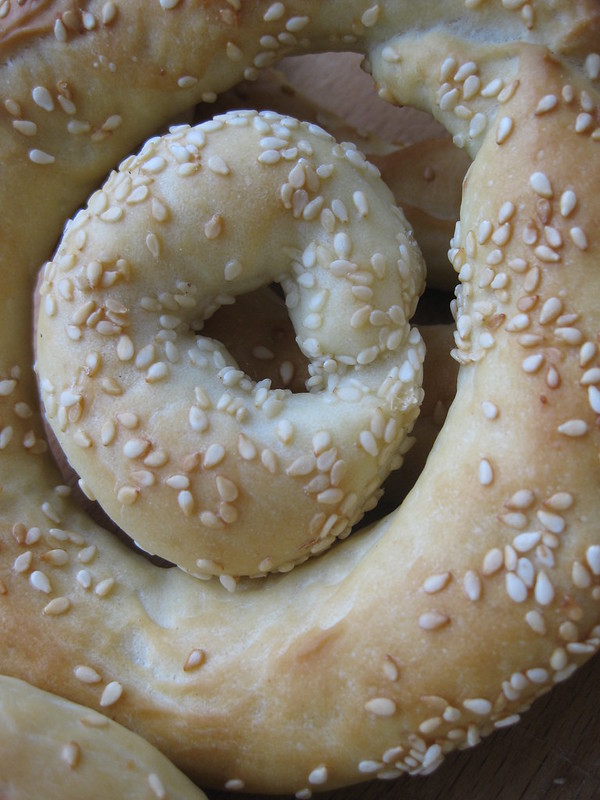
The first koulouri I posted on this blog back in 2012 was with a slightly different recipe. I think overall those first koulouria (plural for koulouri) looked more authentic but almost 5 years later there’s no way I can actually compare the two recipe other than by appearance.
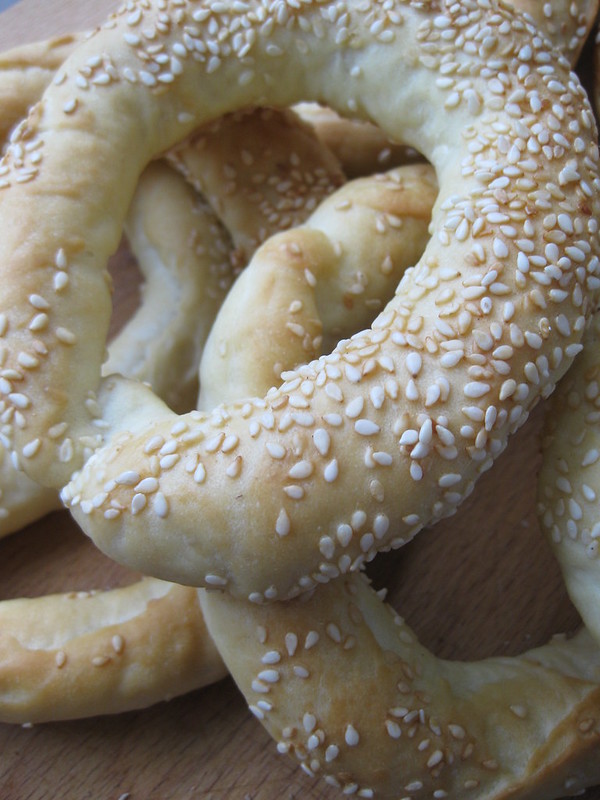
1 year ago – Whole Wheat Fig Bars
2 years ago – How to Make Silky Cream Cheese at Home
3 years ago – Apricot Oatmeal Bar With Pistachios
4 years ago – After Apples Come the Berries
5 years ago – 2 Energy-Boosting Sweets to Keep Your Mind and Spirit Up
Koulouri Thessalonikis or ΚΟΥΛΟΥΡΙ ΘΕΣΣΑΛΟΝΙΚΗΣ adapted from chefonair.gr will make a dozen of soft and a tad sweet bread rings. I’ve made several changes to the original recipe which included filling the rings with chocolate cream cheese.
Ingredients:
- 1/2 kg all purpose flour
- 4 Tbs seed oil – I used olive oil
- 1 Tbs salt – I used less
- 1/2 cup lukewarm water for the dough – I needed more
- 2 Tbs sunflower seed oil for brushing the baking sheet – I used paper / baking mat
- 2 cups lukewarm water for the sugary water – I cut this in half
- 1 cup sugar for the sugary water – I cut this in half
- 2 cups sesame seeds – I had too little of these (be generous!)
- 3 Tbs flour for the yeast
- 15 g fresh yeast – too lazy to check the yeast conversion website, I put in a bit of instant yeast (it should have been 1.76 tsp of instant yeast or 2.65 tsp of active dry yeast)
- 1/2 cups lukewarm water for the yeast
- 2 Tbs sugar for the yeast – I used a bit of honey
Procedure:
Pour lukewarm water into a bowl and dissolve the fresh yeast with the 2 Tbs of sugar. Add 3 Tbs of flour and mix. Cover with plastic foil and leave to rise for 30 minutes at room temperature.
(The original recipe asked for the mixer) Place the flour, the yeast mixture, the oil, the water and the salt to a big bowl and start kneading (3 minutes with the mixer running at low speed and then 5 minutes more at high, a bit longer by hand). Cover the bowl with a towel / plastic foil and leave to rest for 30 minutes and then knead again (5 minutes with a mixer, longer by hand).
Divide the dough into 15-18 pieces (I made 12 balls) and roll each piece into a rope about 30 cm long. Mix sugar with lukewarm water in a plate to create sugary water (it helps keep almost all the sesame seeds on place and adds some colour). Dip the ropes first into the sugary water and then into sesame seeds (place them on a shallow plate: I would suggest keeping some as a reserve because they stick so well and disappear pretty fast). Pinch the two edges to create a ring. Place the koulouria on a greased baking sheet (or line your sheet with parchment paper / baking mat), leaving space between them as they will puff up. Cover with a towel / plastic foil and leave to rise for 30 minutes (my first batch was rising for a bit longer already shaped while the second was rising longer as dough balls).
Bake in the preheated oven at 170’C for 15-20 minutes (mine took 20 minutes).
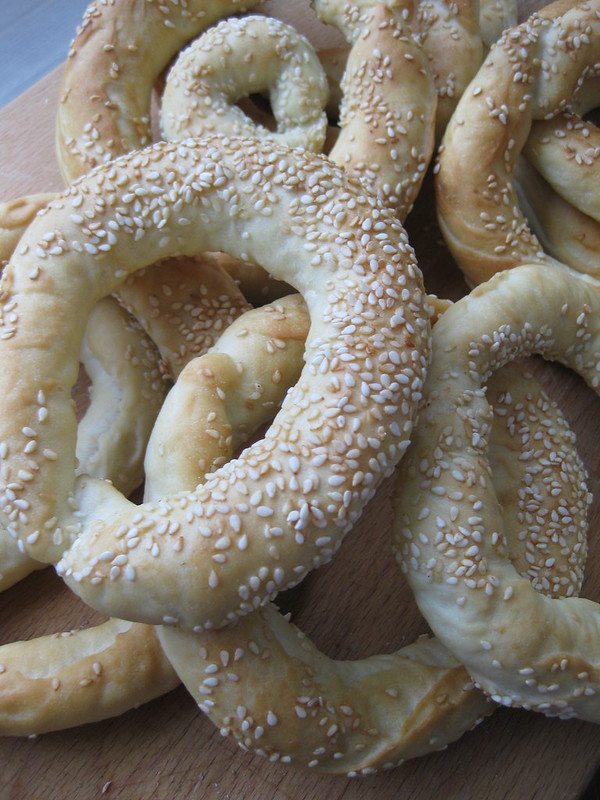
Remarks: You can see how naked the second batch looks, as I was running out of the sesame seeds… For this recipe you do need quite a lot of them if you want a really authentic look and taste! And by the way, with the sugary water trick these seeds do not come off as massively as they would with dipping them in just plain water.
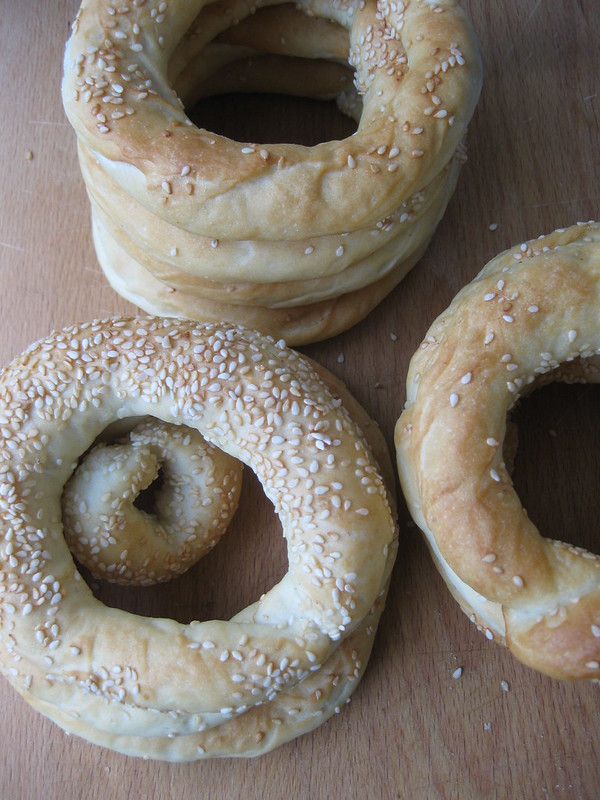
The second batch also looks more browned as I was using a black baking mat for these. It’s a pity today on such a beautiful snowy winter day there’s not much light so the koulouria look rather blueish. Which they don’t 🙂
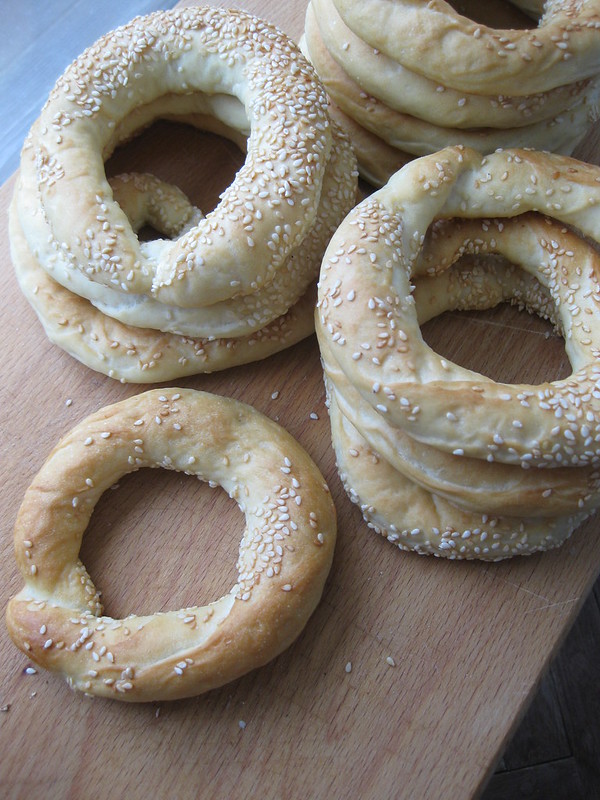
I added less sugar to the dough and a bit less salt and still I think the crumb tastes pretty salty which comes into contrast with the slightly sweet outside thanks to the sugary water.
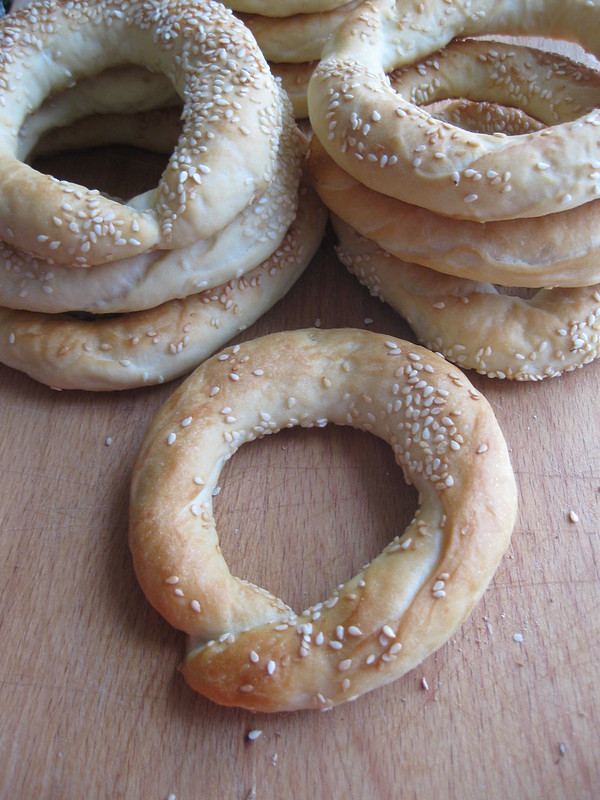
Result: These traditional Greek bred rings are soft and chewy. I would eat them plain or with cheese and salad – although the original recipe suggests slicing them and filling them with chocolate. Which I imagine is also nice as bread is multipurpose!
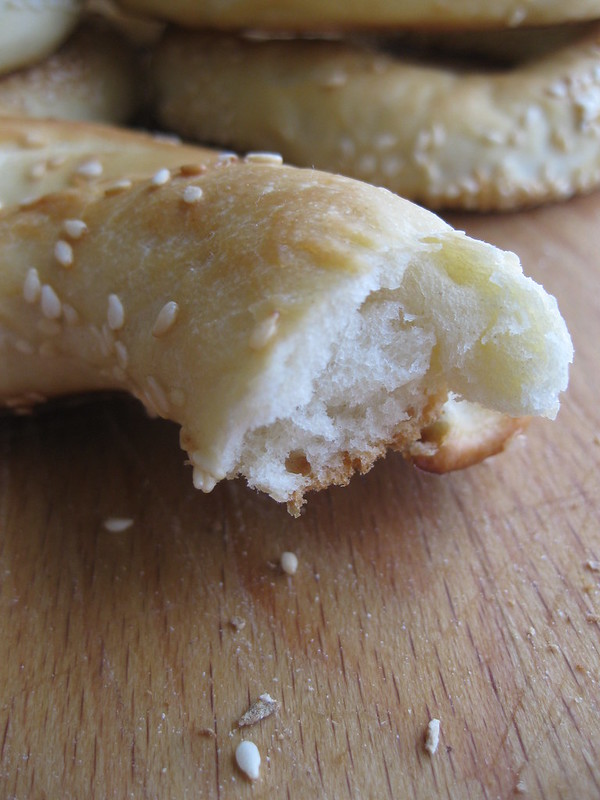
As for the crumb, koulouri is much softer than its Russian counterpart bublik (which has a dense crumb and poppy seeds instead of sesame). Bublik is also larger and thicker, with a more browned surface. Gosh, I love both 🙂

By the way, all in the mood of the first Saturday of the month when we participate in the local recycling activity, I recycled the sugary water into a berry coffee cake. Worked out just fine.

This post goes to the by Country and the Yeast Bread collections.
G.

Reminds me of my first attempt to bake koulouria using the first recipe. These look so good, will try it with zaxapn kai nero next time and probably study some more greek. Popo, I only got a few words watching parts of the video. Thanks for reminding me of Thess,
Euxaristw glukia mou Giannaki! Going to read your fresh post too 😉 I also baked alevropita but thought there was way too much alevri and less turi than I would prefer. Good luck with your baking!
очень вкусные получились! и так просто, и с маслом, и с вареньем! няма-ням! 🙂
Так я и думала, что дело дойдет до варенья 🙂